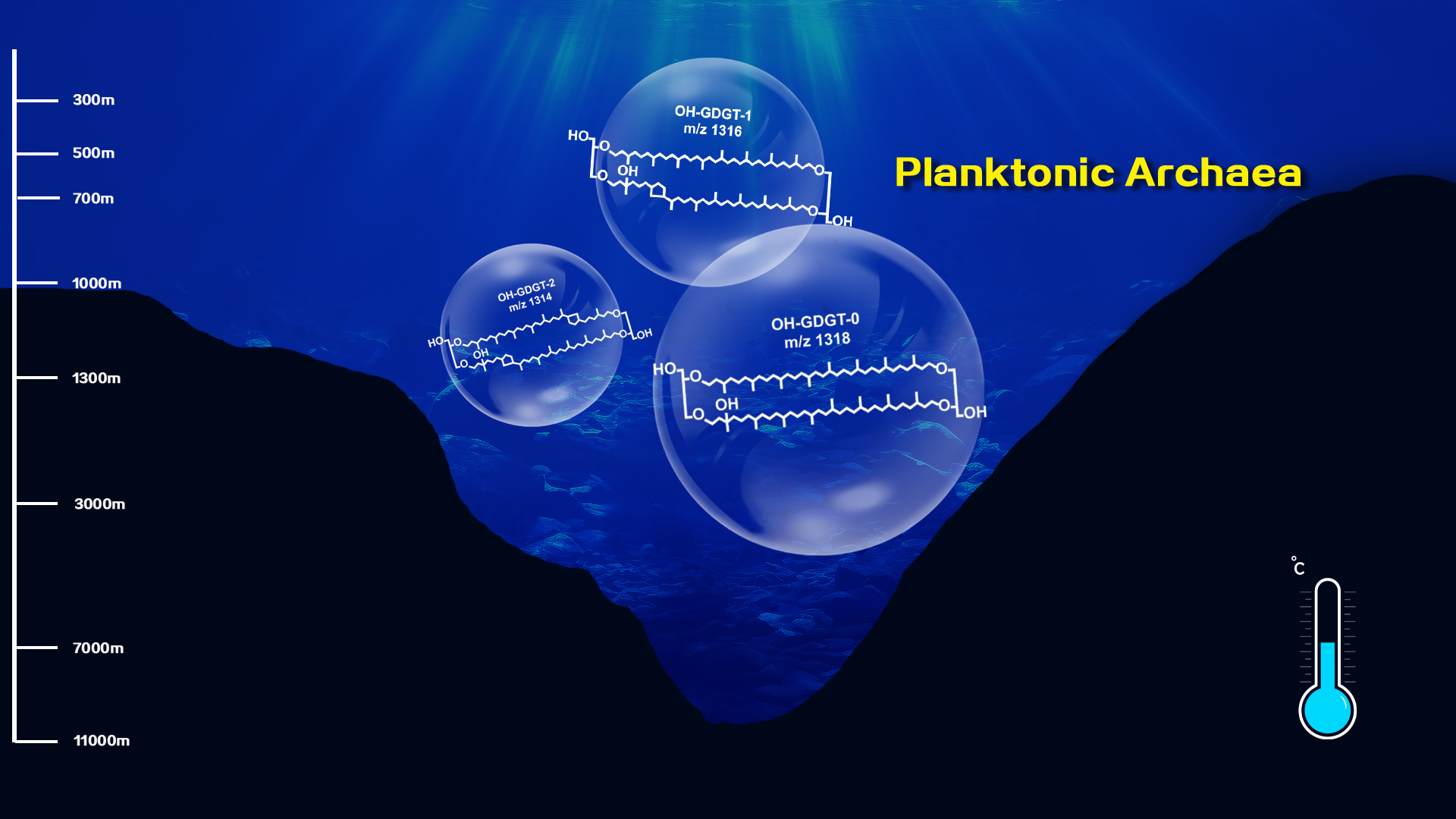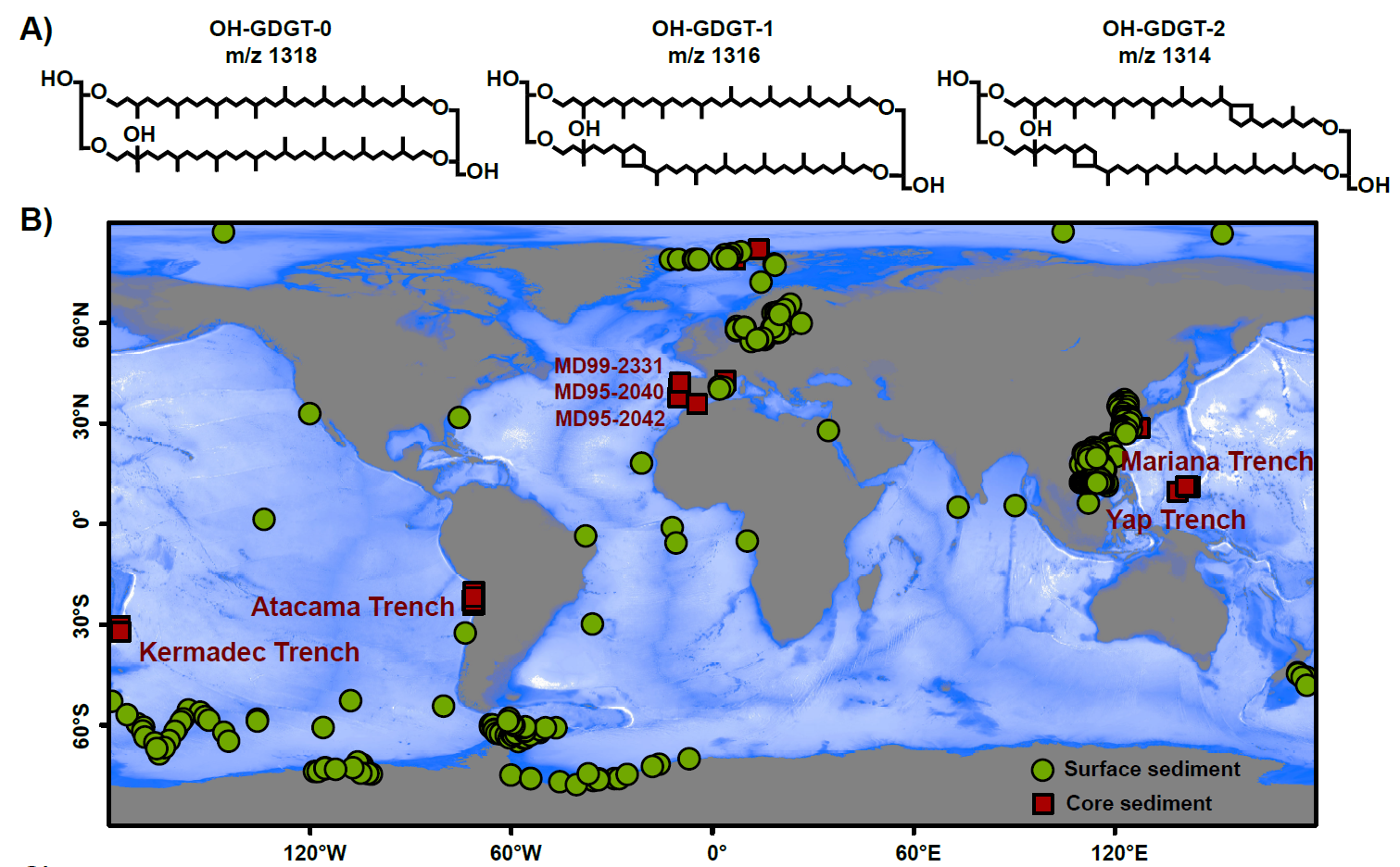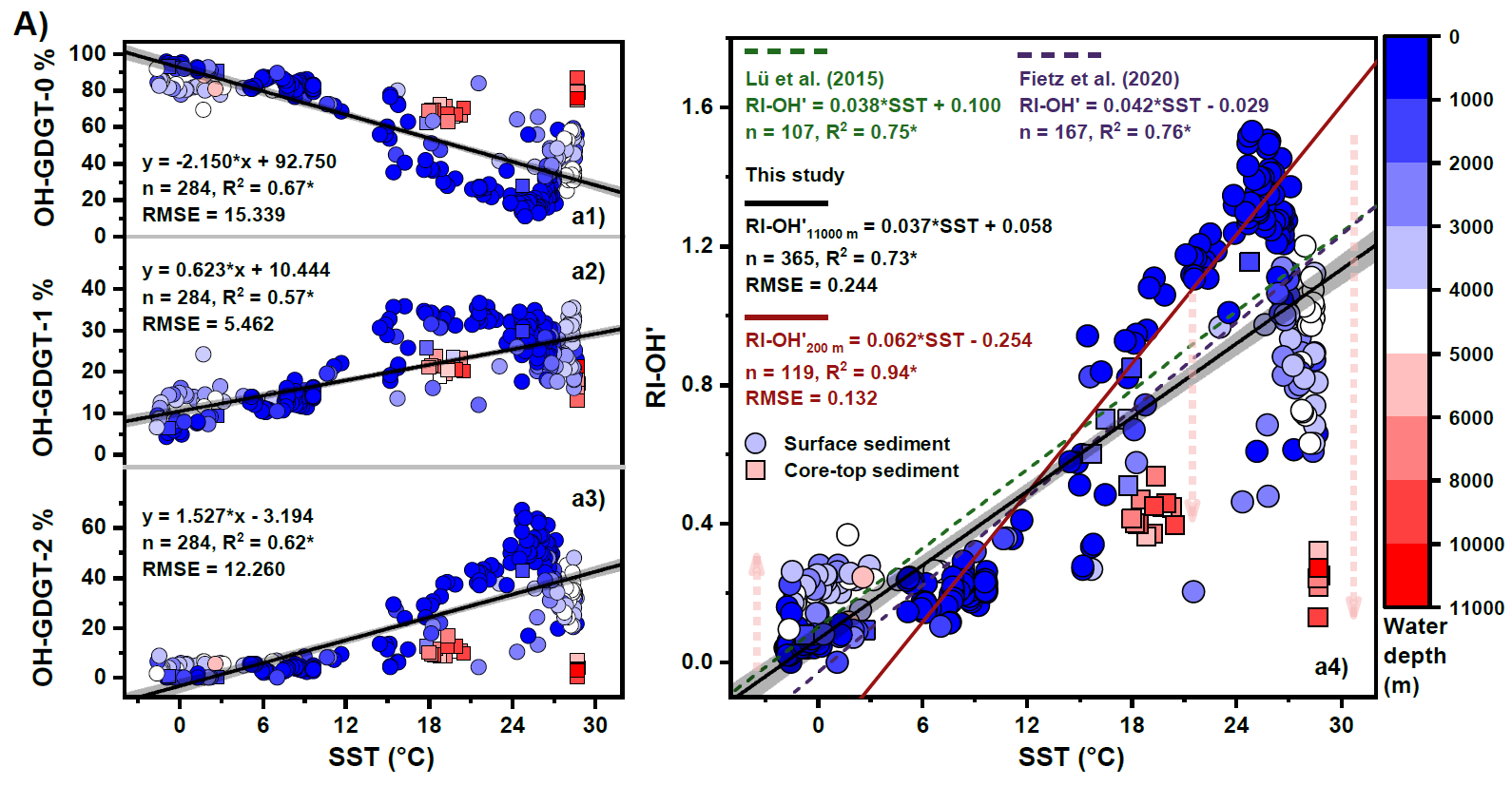Sea surface temperature (SST) plays a crucial role in global climate models, marine ecosystems, and ocean circulation. Understanding changes in SST during geological history is essential for revealing the evolution of Earth’s climate system and providing a scientific basis for predicting and addressing future climate change.
Molecular biomarkers preserved in marine sediments record information about the growth environment of source organisms. Among them, hydroxylated isoprenoid GDGTs (OH-GDGTs) are sensitive indicators of seawater temperature. However, little is known about their sources (from deep-sea water and/or bottom sediments) and ecological characteristics. Planktonic archaea are believed to be the primary source of OH-GDGTs, and they are distributed at various depths in seawater, which may lead to differences between SST estimates based on OH-GDGTs and actual temperatures.

The research team led by Professor Chuanlun Zhang from the Department of Ocean Science and Engineering at the Southern University of Science and Technology (SUSTech) has recently published their findings that new lipid markers of planktonic archaea can unravel the impact of water depth on the global SST index.
Their research work, entitled “Disentangling effects of sea surface temperature and water depth on hydroxylated isoprenoid GDGTs: Insights from the hadal zone and global sediments”, has been published in the journal Geophysical Research Letters.

Figure 1. Molecular structure of archaeal OH-GDGTs; Global data point distribution map
The research team collected 13 sediment core samples from the Kermadec Trench and Atacama Trench, covering a depth range from 2,500 meters to 11,000 meters, and analyzed the composition and distribution of OH-GDGTs produced by archaea.
The results of the study show that OH-GDGT-0, an uncyclized form of OH-GDGT, is the dominant component in the hadal zone, suggesting it may be a common phenomenon in abyssal trenches. Global data analysis clearly reveals a significant negative correlation between SST and OH-GDGT-0, while a pronounced positive correlation exists between SST and OH-GDGT-1 and OH-GDGT-2, indicating that temperature is the primary factor affecting OH-GDGTs. However, the proportions of these components vary at different ocean depths, leading to biased results.
As a solution, the researchers developed RI-OH’ – SST calibration equations suitable for different water depth ranges, which will contribute to a more accurate reconstruction of SST changes in geological history using OH-GDGTs, providing valuable tools and data for climate research.

Figure 2. Composition of archaeal OH-GDGTs and the relationship between RI-OH’ and Sea Surface Temperature (SST)
This research systematically explores the impact of water depth on hydroxylated isoprenoid GDGTs produced by planktonic archaea and, based on this, presents a more accurate approach for reconstructing sea surface temperatures in the ocean. This work not only enhances our understanding of the physiology and ecological characteristics of marine archaea but also holds significant implications for understanding the history of global climate change, offering new tools for paleoceanography and the study of global climate change.
Dr. Wenjie Xiao from SUSTech and Professor Yunping Xu from the Shanghai Ocean University are the co-first authors of this paper. Professor Chuanlun Zhang and Wenjie Xiao are the co-corresponding authors, and SUSTech is the first and corresponding author institution.
Collaborating institutions include the University of Southern Denmark, Shanghai Ocean University, Southern Marine Science and Engineering Guangdong Laboratory (Guangzhou), Shanghai Seismological Bureau, China University of Geosciences (Wuhan), ETH Zurich, Max Planck Institute (Germany), Helmholtz Center for Polar and Marine Research (Germany), and the National Institute of Water and Atmospheric Research (New Zealand).
This research was supported by the National Key Research and Development Program, National Natural Science Foundation of China (NSFC), Danish National Research Foundation, and the Sheshan National Field Observatory Fund (Shanghai).
Paper link: https://doi.org/10.1029/2023GL103109
To read all stories about SUSTech science, subscribe to the monthly SUSTech Newsletter.
Proofread ByAdrian Cremin, Yingying XIA
Photo By